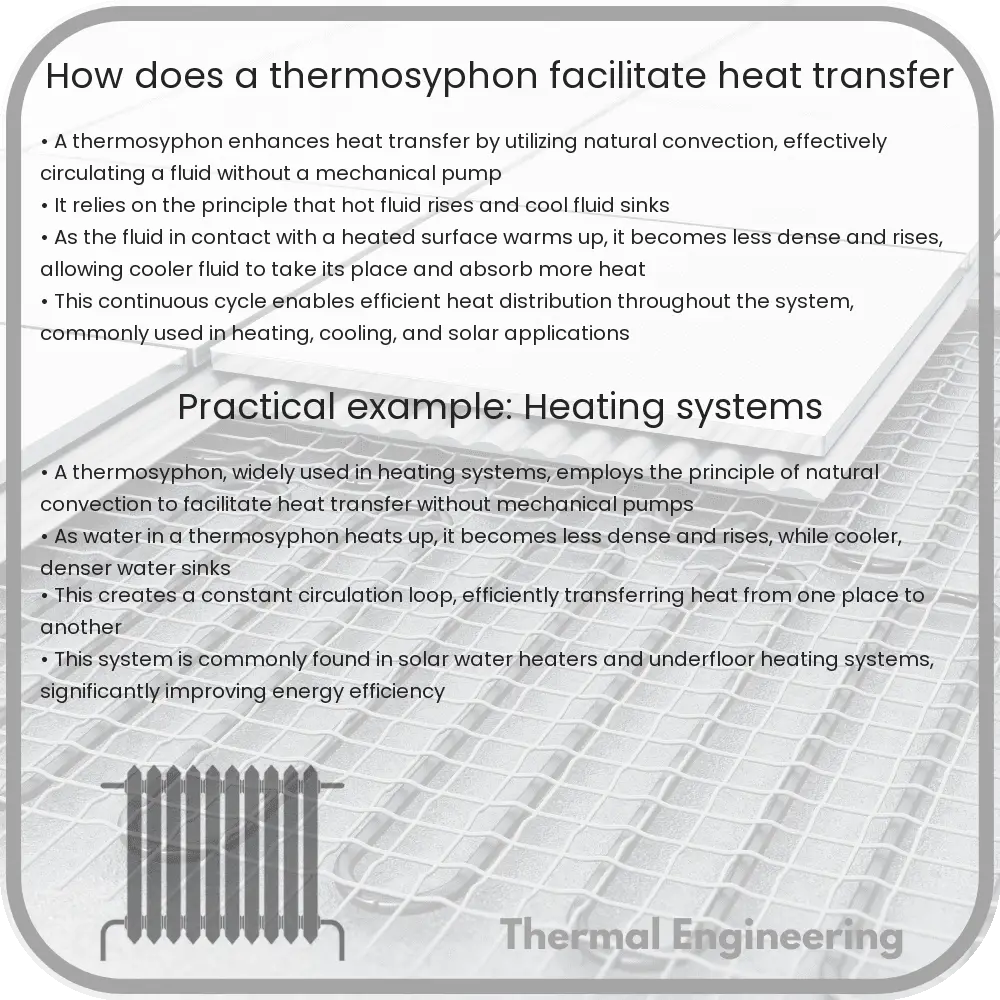Learn about thermosyphon systems, efficient heat transfer technologies using convection to move heat without mechanical pumps.

Understanding Thermosyphon Systems for Efficient Heat Transfer
Thermosyphon systems are a fascinating application of basic physics and engineering principles, designed to facilitate the movement of heat from one location to another without the need for mechanical pumps. This passive heat transfer technology leverages the natural convection process driven by density differences in fluids at varying temperatures, making it both effective and energy-efficient.
Principles of Operation
A thermosyphon operates under the principle that hot fluid rises while cooler fluid sinks. When a fluid such as water or refrigerant is heated, it expands and becomes less dense. This reduction in density causes the heated fluid to rise through a pipe or enclosure, moving away from the heat source. As it rises, it transfers heat to its surroundings or to a heat sink, such as the walls of a container or radiator fins. Once the fluid loses its heat, it becomes denser and sinks back down, creating a natural circulation loop.
Components of a Thermosyphon System
- Heat Source: Provides the initial energy required to heat the fluid at the bottom of the system.
- Fluid: The working substance that carries heat from the source to the destination. Common fluids include water, glycols, or specialized refrigerants.
- Riser Tube: This vertical component is crucial as it allows the heated, less-dense fluid to ascend.
- Condenser/Heat Exchanger: Here, the fluid releases its heat to the environment or to another system and cools down.
- Downcomer: This part facilitates the movement of the cooler, denser fluid back to the heat source to absorb more heat, completing the circulation loop.
Types of Thermosyphons
- Open Thermosyphon: Features a reservoir open to the atmosphere at the top, allowing the fluid within to freely exchange heat.
- Closed Loop Thermosyphon: Sealed entirely, this system often contains a refrigerant and operates under pressure, greatly increasing its effectiveness and range of operation temperatures.
Applications
Thermosyphon systems are used in a variety of applications due to their simplicity and efficiency. Some common uses include:
- Solar water heating systems: Utilizing solar panels to heat water directly, using the thermosyphon principle to circulate the water without a pump.
- Electronic cooling: Employed in computers and electronics to efficiently dissipate heat and maintain optimal operating temperatures.
- Refrigeration systems: Especially in situations where passive cooling is advantageous, such as in remote areas where power supplies are unreliable or unavailable.
Advantages of Thermosyphon Systems
- Energy Efficiency: No external energy (such as electricity for pumps) is required for fluid movement.
- Reliability: Fewer moving parts mean there is less that can go wrong or wear out over time.
- Cost-Effective: Lower operational costs due to reduced energy consumption and maintenance needs.
Conclusion
Thermosyphon systems exemplify how fundamental principles of physics can be ingeniously applied in engineering to solve practical problems. By harnessing the natural behavior of fluids under different temperatures, these systems accomplish effective heat transfer without additional power, cutting both energy use and maintenance costs. This makes thermosyphons a sustainable and economical solution in multiple industries, particularly in the renewable energy and cooling sectors.